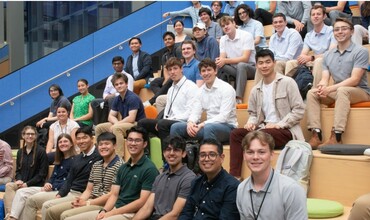The Draper Scholars Program emphasizes empowering students in 14 key research areas to make the greatest impact. We encourage applicants to align their research with these topics.
Photonics Packaging
Draper has a core interest in precision navigation and timing, and many of these systems use optical components. Recent advances have enabled photonic integrated circuits (PICs) that have a large number of optical components on a single chip. The packaging of such PICs presents a considerable challenge because it is difficult to couple light on or off a PIC. Various methods are being explored for convenient optical packaging.
Technical Point of Contact
Research Interests
Photonics Packaging

- Automated attachment
- A large number of optical connections
- A very large number of electrical connections (ex. bump bonding).
- Compatibility with different waveguide material systems (Silicon, III-V, LiNbO3, garnet)
- Vertical optical coupling to free space (for LiDAR or Free Space Optical Communication applications)
- The ability to couple to different mode shapes and sizes
- The ability to add and remove disposable PICs in the field
It is unlikely that a single method can simultaneously serve all these needs, but all these needs do impact systems in which Draper has interest. It is therefore preferred to meet all these needs with as few unique methods as possible. Many institutions are actively researching improved optical coupling methods to meet these needs [1].
Methods can be divided into two categories, depending on whether they couple light from the edge of chip or from above. The most common method for coupling light from above is by using a grating. This method lends itself to standard planer fabrication methods but is limited in efficiency and bandwidth. A technique with better performance in these areas is shown in figure 2 [2]. This method uses a 3D mirror to both direct and focus the light to above. The fabrication of such a mirror is a challenge and Draper is exploring an alternative method to fabricate integrated mirrors. This method uses self-assembly of gold nanoparticles, functionalized with DNA, to create pyramids aligned to wells in the substrate, as shown in figure 3 [3] [4].
This is one method of light coupling that is of interest, but other methods, such as adiabatic tapers, photonic wirebonding and are also of interest. Also of interest are the aspects of packaging other than light coupling, such as the physical packaging itself and improved methods for alignment.


Have Any Questions?
To learn more or stay up to date with our key areas, please fill out the below contact form.

